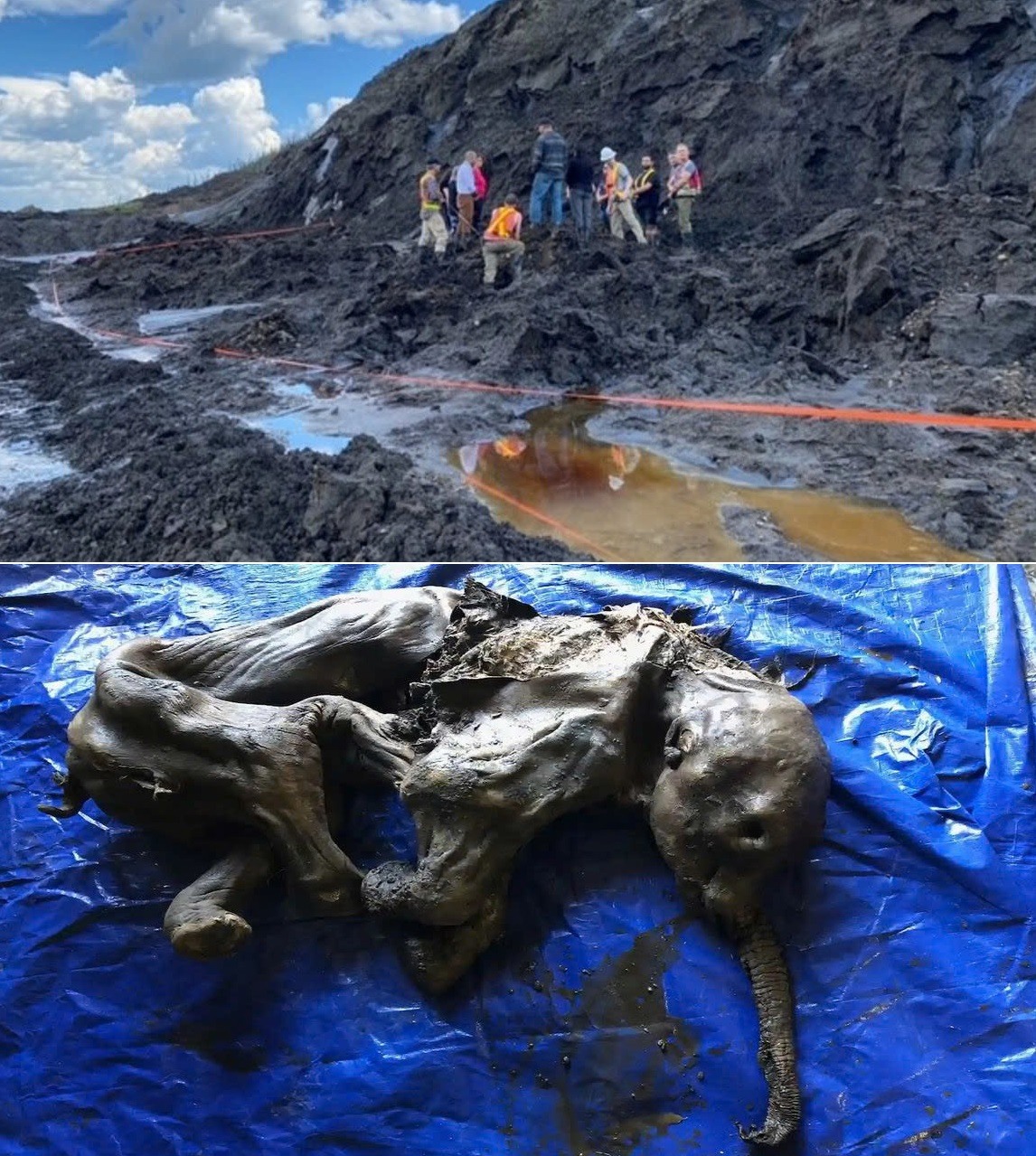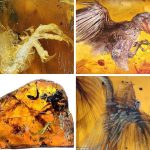Nun Cho Ga: The 30,000-Year-Old Woolly Mammoth Baby

In a remarkable discovery that has captivated paleontologists and the public alike, a gold miner in Canada’s Yukon unearthed the perfectly preserved remains of a baby woolly mammoth in June 2022. Named Nun Cho Ga, which translates to “big baby animal,” this 30,000-year-old specimen offers an unprecedented glimpse into the Pleistocene era, shedding light on the life, environment, and anatomy of one of Earth’s most iconic prehistoric creatures. Frozen in icy permafrost, Nun Cho Ga is a rare time capsule, bridging the gap between the ancient past and the present.
A Window into the Pleistocene

Nun Cho Ga’s exceptional preservation provides scientists with more than just bones; delicate features such as skin, hair, and even toenails remain intact. These details allow researchers to study the mammoth’s physiology, growth patterns, and health, offering insights into the challenges faced by these magnificent creatures during the last Ice Age. Analysis of its remains can also reveal information about diet, habitat, and the environmental conditions that shaped the Pleistocene landscape in what is now the Yukon Territory.
The discovery of Nun Cho Ga is particularly significant because it represents one of the most complete and well-preserved baby mammoths ever found. Unlike skeleton-only finds, this specimen offers a more holistic view of mammoth development, behavior, and adaptation. Researchers can explore questions about the species’ early growth stages, survival rates, and social structures, adding depth to our understanding of Ice Age ecosystems.
Scientific and Cultural Impact
Beyond its paleontological significance, Nun Cho Ga has ignited global interest in prehistoric life and the preservation of ancient remains. Such discoveries remind us of the vast changes Earth has undergone over tens of thousands of years, from glacial landscapes to thriving Ice Age megafauna. The find also emphasizes the critical role of permafrost in preserving ancient DNA and organic material, opening possibilities for future research into extinct species, including potential insights into genetics and evolutionary pathways.

The mammoth has also captured the imagination of the public, inspiring art, documentaries, and educational programs. Nun Cho Ga serves as a tangible connection to a world long vanished, allowing people to visualize and understand a time when massive creatures roamed the frozen landscapes of North America. The specimen highlights both the fragility and resilience of life in extreme environments.
Bridging Past and Present
Nun Cho Ga is more than a scientific curiosity; it is a bridge between epochs. Through this discovery, we can study not only the anatomy of a woolly mammoth but also the broader environmental and climatic conditions of the Ice Age. Each preserved detail—the tiny hairs, the skin texture, the intact tusks—tells a story of survival, adaptation, and the natural history that has shaped our planet.
Conclusion
The discovery of Nun Cho Ga, the 30,000-year-old baby woolly mammoth, is a milestone in paleontology. Perfectly preserved in the Yukon permafrost, this tiny prehistoric creature provides unprecedented insights into Ice Age life, evolution, and environmental conditions. Nun Cho Ga reminds us of the mysteries still buried beneath the Earth’s frozen landscapes and ignites wonder about the prehistoric world, offering a rare glimpse into a vanished era that continues to fascinate scientists and the public alike.











